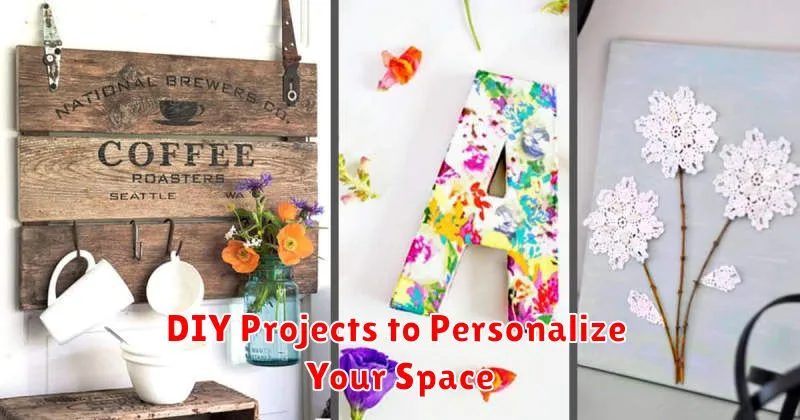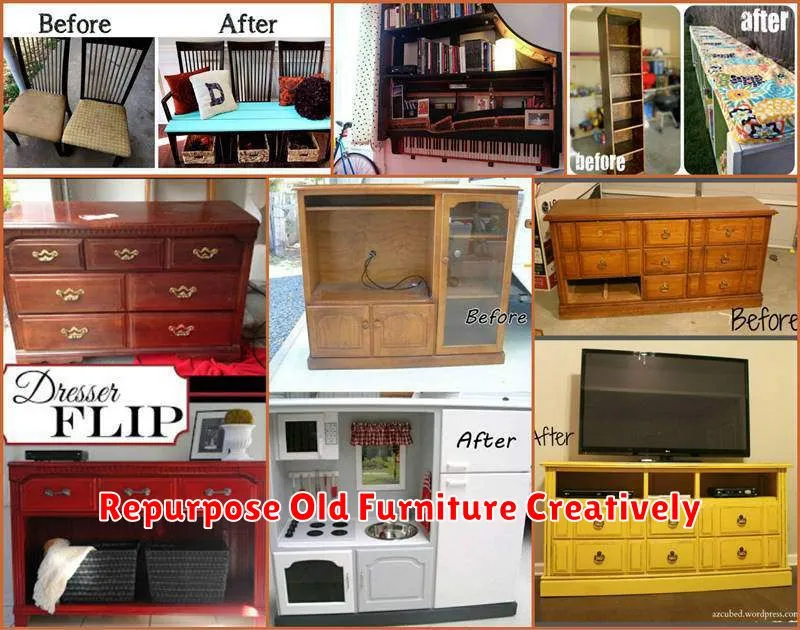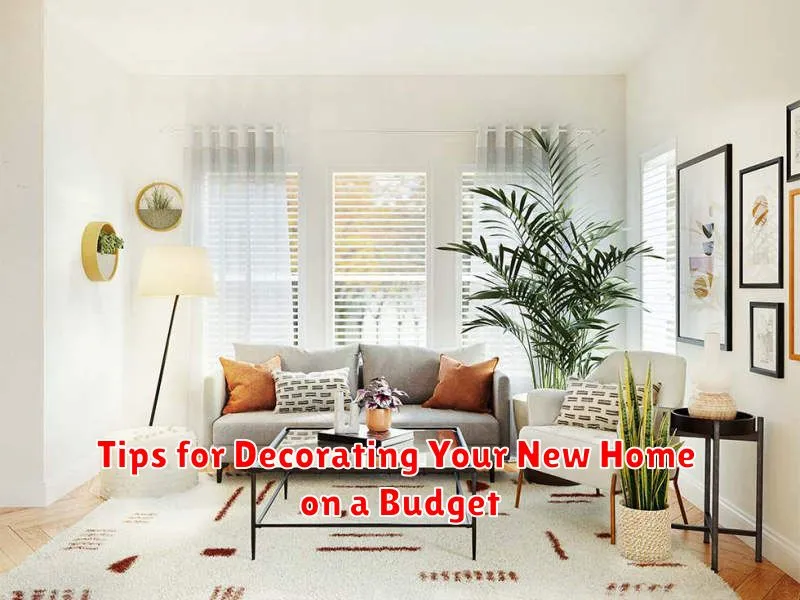Moving into a new home is an exciting chapter, but furnishing it can often strain your budget. Don’t let the costs of decorating overwhelm you. This article offers practical tips and budget-friendly ideas to help you decorate your new home without breaking the bank. We’ll explore creative strategies, from repurposing existing items to finding affordable décor, ensuring your new space reflects your style without exceeding your budget.
Transforming your new house into a stylish and comfortable home doesn’t require extravagant spending. With careful planning and some savvy decorating choices, you can achieve a beautiful aesthetic while staying within your financial means. Discover how to maximize your budget, prioritize your needs, and find affordable yet impactful decor solutions for your new home. Let’s delve into these valuable tips and unlock the potential of budget-friendly decorating.
Start with a Clear Design Plan
A well-defined design plan is essential for any successful project. It serves as a roadmap, guiding the entire process from initial concept to final execution. A comprehensive plan should outline key objectives, target audience, project scope, budget constraints, and timelines. Clearly defining these parameters at the outset ensures a focused approach, minimizes costly revisions, and increases the likelihood of achieving desired outcomes.
Planning involves thorough research and analysis. Understanding user needs, competitive landscapes, and current trends informs design decisions and helps create effective solutions. Careful consideration of technical requirements and platform compatibility is also crucial. By meticulously addressing these factors upfront, the design process becomes more streamlined and efficient.
Furthermore, a strong design plan facilitates communication and collaboration among stakeholders. It provides a shared understanding of project goals and expectations, minimizing misunderstandings and ensuring everyone is working towards the same vision. Regular reviews and feedback sessions throughout the design process keep the project on track and allow for necessary adjustments to be made in a timely manner.
Prioritize Essentials First
In any situation requiring decision-making, especially under constraints, prioritizing essentials is paramount. This involves identifying the most critical needs and focusing resources on addressing them first. Whether managing a budget, planning a project, or responding to an emergency, understanding which elements are truly essential for success or survival allows for efficient allocation of time, energy, and resources. Neglecting to prioritize can lead to wasted effort and potentially detrimental outcomes.
The process of prioritization often involves assessing the impact and urgency of various needs. High-impact, high-urgency items should be tackled immediately. Lower-impact items, even if urgent, can often be deferred. Similarly, high-impact, low-urgency items can be strategically planned for while low-impact, low-urgency items can often be disregarded entirely. This methodical approach ensures that essential elements receive the attention they deserve.
By focusing on essentials first, individuals and organizations can improve efficiency, reduce stress, and increase the likelihood of achieving desired outcomes. This principle applies across various domains, from personal finance to disaster preparedness. Making informed choices about where to allocate limited resources ultimately contributes to greater success and resilience in the face of challenges.
Use Thrift Stores and Online Deals

Saving money on clothing and household items is easier than you think. One effective strategy is to frequent thrift stores. These establishments offer a wide array of gently used items at significantly reduced prices. You can find everything from clothing and accessories to furniture and home décor. By embracing thrifting, you not only reduce spending, but also contribute to sustainable consumption by giving items a second life.
Another avenue for budget-friendly shopping is online marketplaces and deal websites. These platforms often feature discounted items, sales events, and opportunities to compare prices across different retailers. Subscribing to email alerts for specific products or categories can help you snag the best deals quickly. Be sure to factor in shipping costs and read reviews carefully before making a purchase.
Combining these two approaches maximizes your savings potential. Check thrift stores first for specific items you need, then compare those prices with online offerings. This comparative shopping method empowers you to make informed decisions and secure the most affordable options. By being a discerning shopper and exploring both physical and digital marketplaces, you can effectively manage your budget and acquire quality goods without overspending.
DIY Projects to Personalize Your Space

Personalizing your living space can be a fun and rewarding experience. DIY projects offer a cost-effective way to add unique touches that reflect your personality and style. From simple crafts to more involved projects, there are numerous ways to transform your home without breaking the bank. Consider updating existing furniture with a fresh coat of paint or repurposing old items into something new and functional. Creating decorative elements like wall art or customized storage solutions can also make a big impact.
One popular DIY project is creating a gallery wall. This is a great way to display cherished photos, artwork, and other mementos. Start by selecting a variety of frames in different sizes and styles. Arrange them on the floor before hanging to ensure a pleasing composition. Another simple project is to reupholster old furniture. This can give chairs, ottomans, or even headboards a brand new look and feel. Choose a fabric that complements your existing décor and follow online tutorials for step-by-step instructions.
If you’re looking for a more challenging DIY project, consider building your own shelves or storage units. This allows you to customize the size and design to perfectly fit your needs and space. There are numerous free plans and tutorials available online. With a little effort and creativity, you can transform your living space into a personalized haven that reflects your unique style and personality.
Repurpose Old Furniture Creatively

Giving old furniture a new lease on life is a rewarding and sustainable practice. Instead of discarding unwanted pieces, consider their potential for transformation. A dated dresser can become a stylish bathroom vanity. A worn-out ladder can be repurposed into a unique bookshelf. With a little creativity and effort, you can transform forgotten furniture into functional and stylish additions to your home.
Before starting any project, carefully assess the piece’s structural integrity. Ensure it’s sturdy enough for its intended new purpose. Simple repairs, like tightening screws or reinforcing joints, can make a big difference. Then, consider the desired aesthetic. A fresh coat of paint, new hardware, or updated upholstery can completely change the look and feel of a piece.
Repurposing furniture is not just about saving money; it’s about reducing waste and giving character to your space. By incorporating repurposed pieces, you add a unique touch and a story to your home decor. So, before you throw away that old chair or table, think about its potential and unleash your creativity.
Avoid Overspending on Trends
Trends come and go. Chasing every fleeting fashion fad or tech gadget can quickly drain your bank account. Prioritize needs over wants and ask yourself if a trendy item will truly add value to your life or if its appeal is purely superficial and temporary. Consider the item’s longevity and whether it aligns with your personal style beyond the current hype.
One effective way to combat overspending is to set a budget and track your expenses. This will give you a clear picture of where your money is going and help you identify areas where you can cut back. When you’re tempted by a trendy purchase, take a step back and consider whether it fits within your budget. Waiting a few days before making the purchase can also help you avoid impulse buys and determine if the item is a genuine want or just a fleeting desire.
Focusing on quality over quantity is another key strategy. Investing in timeless, well-made pieces that will last for years rather than succumbing to cheap, trendy items that quickly go out of style will save you money in the long run. Consider building a capsule wardrobe with versatile basics and supplementing with a few carefully chosen trendy items. This approach not only helps you avoid overspending but also promotes a more sustainable and mindful approach to consumption.
Focus on Comfort and Functionality
When designing a space, whether it’s a home or office, prioritizing comfort and functionality is key. Comfort ensures the space is pleasant to occupy, promoting relaxation and productivity. Functionality, on the other hand, means the space is designed to be practical and serves its intended purpose effectively. A well-designed space achieves a balance of both, creating an environment that is both enjoyable and efficient.
Consider the flow of movement within the space. Furniture placement should allow for easy navigation and should not obstruct walkways or essential functions. Lighting is crucial for both comfort and functionality. Adequate lighting enhances visibility and reduces eye strain, while strategically placed lamps can create a warm and inviting atmosphere. Ergonomics also play a vital role, particularly in workspaces. Choosing chairs and desks that support proper posture can significantly improve comfort and prevent long-term health issues.
By addressing these key elements, you can create a space that is not only aesthetically pleasing but also highly functional and comfortable to inhabit. A focus on these core principles will result in a space that supports your needs and enhances your overall well-being.

